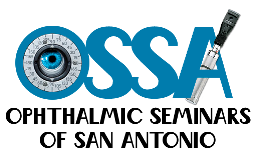Intermediate Ocular Motility
Course Description: This course will provide a review of the extra ocular muscles and their actions, as well as a review of fusion, phorias, and tropias. The classifications of strabismus and comitant versus incomitant deviations will be discussed and the various syndromes reviewed. This course will introduce the ophthalmic assistant who is preparing for certification as an ophthalmic technician to intermediate ocular motility and will provide a great opportunity for review for the experienced ophthalmic technician.
Upon completion of this course, the participant should be able to:
1. List the extra ocular muscles and their actions.
2. Describe fusion, phorias, tropias, and intermitant tropias.
3. Describe the types and classifications of strabismus.
4. Describe the types of amblyopia and method for detection and
evaluation assessment methods.
Upon completion of this course, the participant should be able to:
1. List the extra ocular muscles and their actions.
2. Describe fusion, phorias, tropias, and intermitant tropias.
3. Describe the types and classifications of strabismus.
4. Describe the types of amblyopia and method for detection and
evaluation assessment methods.
© 2024
